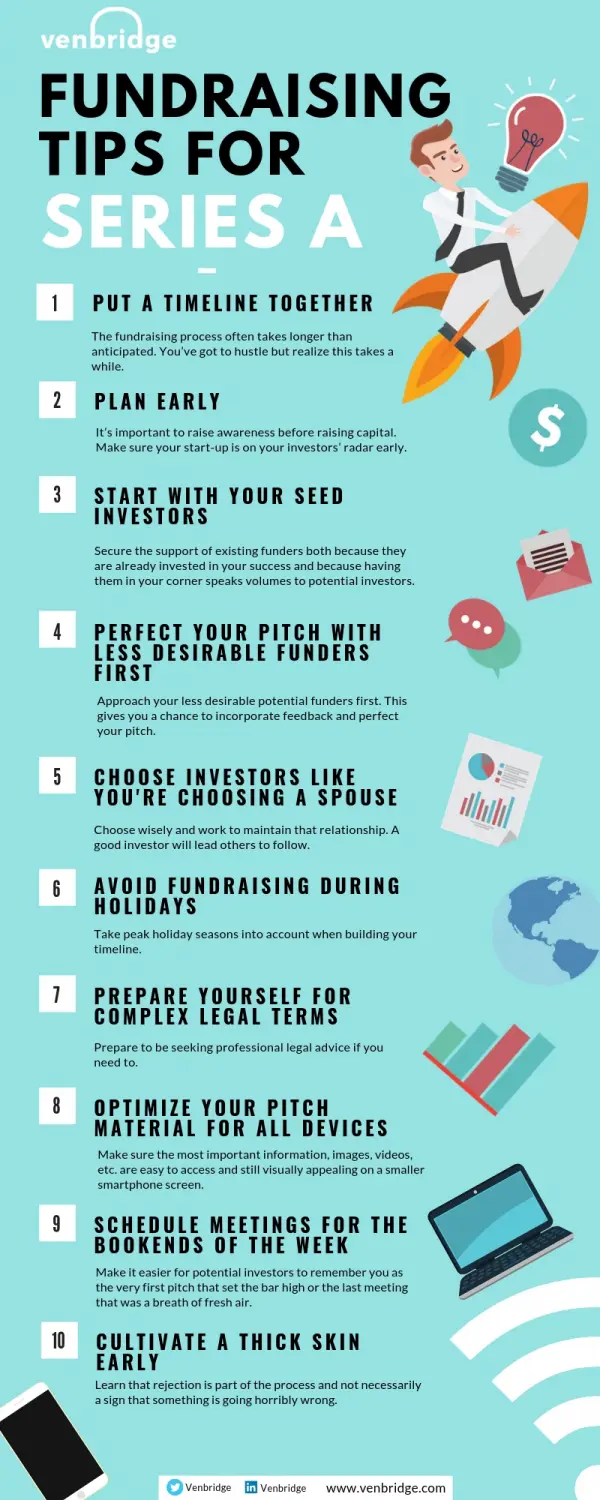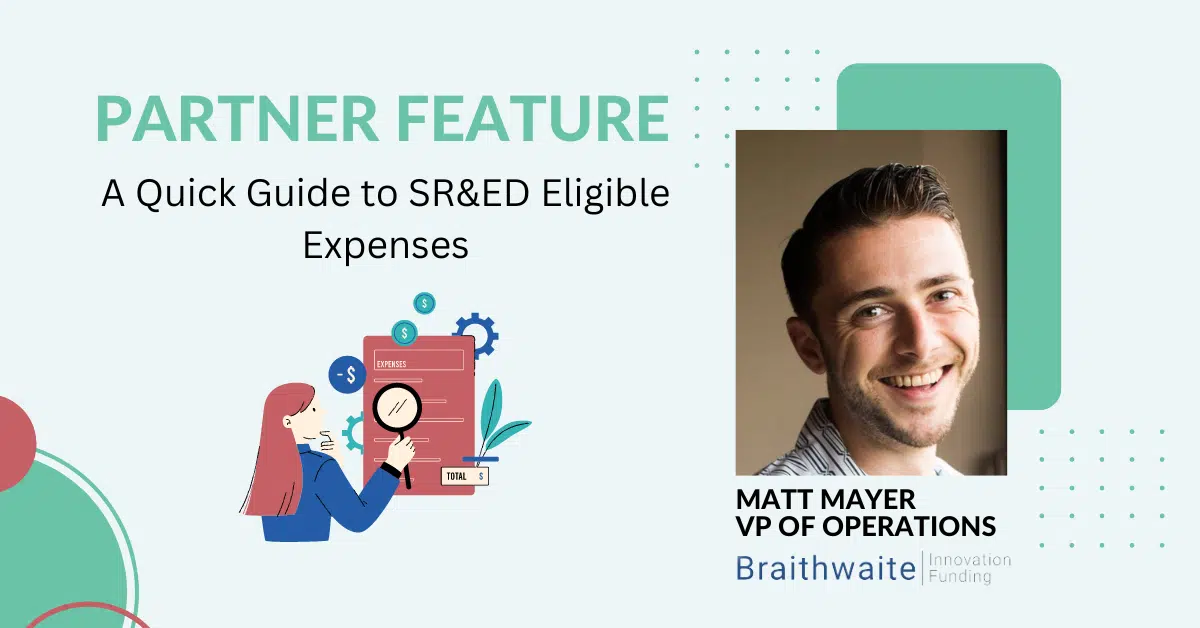Fundraising is one of the most challenging aspects of growing a business. For first-time founders and business owners, the process of raising capital can be riddled with stumbling blocks and discouraging moments. Seriously, it’s hard. That said, countless benefits await those who power through this key stage of start-up growth – and I’m not just talking about the cash.
What’s a Series A (the basics for those who don’t know)? A Series A funding round occurs after the seed stage when a start-up has built some momentum and satisfied their initial goals in terms of revenue, user numbers, views, or other KPI’s. In Series A, investors generally want to see more substantive business plans, precise metrics, and KPI’s to ensure as much security and accountability as possible.
To help you navigate this important chapter in the development of your business, here are some key tips to remember:
1. Timeline! Put a timeline together…and then add a whole bunch more time to it
The fundraising process often takes longer than anticipated. Many first-time fundraisers encounter trouble when they run their timelines too tightly and fall short of their fundraising goals. That being said, it is also important not to let the process drag on for too long. You’ve got to hustle but realize this takes a while. Once you’ve provided sufficient information to your investors, it’s okay to be firm with your deadline to make sure that that cheque gets signed!
2. Plan early and prime your investors
It’s important to raise awareness before raising capital. Make sure your start-up is on your investors’ radar early. Your investors shouldn’t be hearing about your business for the first time when you’re hitting them up for cash. Always aim for a warm introduction from someone the investor trusts.
3. Start with your seed investors
New investors who come in during the Series A round will often be curious about how many of your initial investors are on board for this round –“who else is in” will be a common question. It’s important that you secure the support of existing funders because they are already invested in your success. Having them in your corner speaks volumes to potential investors.
4. Perfect your pitch with less desirable funders first
Once you have your seed investors on board, it’s a good idea to approach your less desirable potential funders first. This gives you a chance to incorporate feedback and perfect your pitch when the stakes are relatively low. Working your way up will mean that you are well-practiced and polished by the time you reach your most desirable make-it-or-break-it investors.
5. Choosing an investor is like choosing a spouse
Choose wisely and work to maintain that relationship. Since in a Series A round and onwards one investor usually leads and encourages others to follow, securing your first investor as early as possible will aid the whole process. Part of the task here is to balance the value of brand recognition with finding the right working partner for your business. It’s better to have a stellar partner at a mid-range venture capital firm than a mediocre experience with a partner from a top-tier brand.
6. Avoid fundraising during peak holiday periods such as July and December
Things can really slow down when funders have fewer people on the ground due to vacations. At the very least, take holiday seasons into account when building your timeline.
7. Prepare yourself for more complex legal terms
Series A rounds tend to be more complicated than initial seed rounds. There are several free resources online to help you wade through things like term sheets, but honestly prepare to be seeking professional legal advice. If you can navigate on your own, that’s great – If not, at least you’re prepared.
8. Is your pitch material optimized for all devices?
This seems like a really basic concern, but the reality of the situation is that most investors are busy people who do most of their business on their phones. Make sure the most important information, images, videos, etc are easy to access and still visually appealing on a smaller smartphone screen (no one wants to squint).
9. Schedule meetings for the bookends of the week
Either first thing on Monday morning or the last spot on Friday afternoon is what you want. Why not make it easier for potential investors to remember you as the very first pitch that set the bar high or the last meeting that was a breath of fresh air?
10. Cultivate a thick skin early
Fundraising is hard work and you are likely to encounter many “no’s” along the way. Learn that rejection is part of the process and not necessarily as a sign that something is going horribly wrong. When you receive those lukewarm “it’s not a great fit for us at this time” emails, follow up. Collecting feedback from funders who declined your pitch and adapting your presentation can be a major boon to your future success.
Visit venbridge.com for more details on non-dilutive venture debt, SR&ED Financing, and tax credit consulting services. Venbridge’s services allow you to maximize your government tax incentives, better manage cash flow, and invest more in the areas you need.
Venbridge
+1–833- 386–3632





